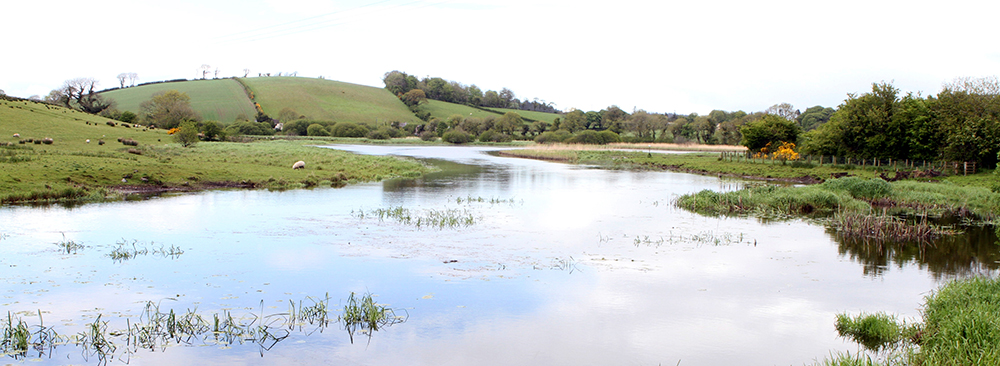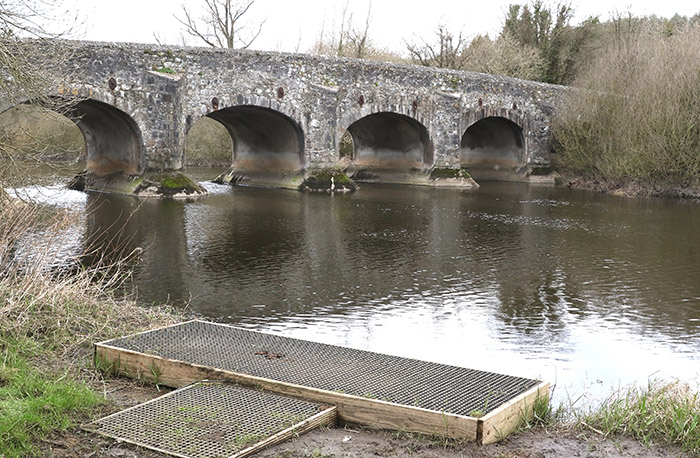The Quoile River that meanders past Downpatrick may not be the best coarse fishery in Ireland, but it did hold a very decent stock of pristine, native rudd, with perch, eels and a fair head of pike writes Jim Masson.
Take your mind off worldly woes such as coronavirus and get involved in angling. This article is the first in a series I will be writing on various types of angling to encourage everyone out into the great world of nature and our beautiful countryside.
In bygone years the Quoile attracted anglers (tourists and visitors) from far afield and even a former world champion coarse angler Ian Heaps fished there at the Killyleagh Road bridge in 1992. He filled not one but two keep nets of rudd which was a tremendous feat of his angling skills, showing that the river was in a very healthy state then. But it has declined and needs to be nursed back into shape. (Check my theory below on how could be done.)

Rudd grow up to over 2lbs but the Quoile stock is generally smaller. They are a beautiful river fish with bright red fins and a silvery-bronze body and swim in shoals in canals, loughs, and rivers throughout Ireland.
Coarse angling prospects, however, have declined in more recent decades for many environmental reasons. The old Inch dump may be leaching into the watercourse, farmers adjacent to the inland feeder rivers could be using fertilisers eg nitrates and phosphates that are incompatible with a healthy river, and the impact of sewage systems too can’t be ignored. And of course for quite a number of years seals had managed to enter the Quoile pondage area through a broken part of the flood gate lower down the river. They simply cleaned out the excellent pike population and all sizeable fish in the area. But thankfully that has been fixed and now the Quoile should be in recovery mode.

The Quoile in its lower reaches below the Killyleagh Road Bridge is relatively slow moving, and is a perfect venue for stick float fishing. There are a number of stands there now courtesy of DAERA. Basically, you use a long, 12-foot float rod, a rod rest, a small fixed spool reel with 2.5lbs BS monofilament line. At the business end you attach a 2BB stick float with two small rubber bands about around 3-feet from the hook which is either a size 14 or 16. In very clear conditions you may even use a size 18 (small). Between the hook and the float, you clip on 2x double BB bits of ‘lead weights’ and that should almost set your float. You may have to adjust the weight until it sets the float so that only the small top section is showing. When a fish bites, the float will suddenly dip under the surface and you set the hook gently by raising your rod.
A word about bait. The universal coarse silver fish bait is maggots and they can often be got from your local fishing tackle shop in Downpatrick or Ballynahinch or by post. Or you can make your own in the warmer months! All you need to do is attach one maggot by running the hook through where the two black ‘eyes’ are on the maggot and you are ready to cast. Two maggots could be fished too. You don’t need to cast out too far either because you will already have brought the fish to you by ground-baiting. And for a bit of fun you could even try fishing with a small piece of bread, bloodworms or sweetcorn.
Ground-baiting is simply a concoction of bread crumbs, but if you want to really get a feeding frenzy going, you can add chopped up worms, sweetcorn, hemp seed and even add specialised flavourings from your tackle shop. This will draw the fish into a set area you are building up within casting distance. All you have to do then is throw in an occasional handful of the breadcrumb mix squeezed into a ball to keep the fish feeding in your swim.
In match competitions, the water may be filled with mixed fish feed as anglers vie to attract the shoals of rudd and other fish to their swim.
You will learn to ‘read’ your float through practice and recognise a bite as opposed to fish bumping the float and line. This type of coarse fishing demands concentration as the bite and the strike all happen quite quickly.
And one last point on how to fish the 2BB stick float. Cast slightly upstream of where you have been throwing in your breadcrumb mix. Your float will slowly drift through this spot and you will hopefully get a bite. You may have to experiment with sliding your float up and down the line to get the right depth the fish are feeding at, but rudd usually feed nearer the surface, so anything from 18-inches to a couple of feet would probably suffice.
While a shoal of rudd will keep you entertained for an afternoon, perch will also be feeding among the rudd as will rudd hybrids. The hybrids are rudd that have bred with bream or roach – other fresh water species – and have arrived here naturally or even been dropped into the Quoile by the Inland Fisheries section who also take pike from trout fisheries and put them in the Quoile for the benefit of the pike anglers. A good pike population helps maintain a healthy silver fish stock.

Just a couple of last points on rudd fishing. Look after the fish you catch. Use a small hook remover or pliers to remove the hooks without damaging the mouths of the fish. Barbless hooks are the way to go. If you have barbed hooks you can pinch them down with a pliers. And also use a keep net which is basically a large, long net bag which can be weighted down along the bank. It can be handy for weighing your catch at the end of your session if you need too. A keep net prevents the rudd from being released back into the swim and panicking the rest of the shoal scattering the fish from your hard-earned swim.
Other accessories are a stool, a landing net, a pair of scissors, extra hooks and split shot weights, and a couple of floats. That should get you on your way angling for rudd. And a flask of tea or coffee!
So, there we are. You are set to venture out over the Easter period and through the summer months and enjoyed a few sessions fishing for Ireland ‘wee bars of silver’. It’s a great way to entertain the family too but youngsters being youngsters, they will get bored soon enough.
Now that many of us have to self-isolate or keep our social distance, angling is a very good pastime for relaxing, enjoying nature, getting fresh air, watching the river flow by and going home to your wife boasting about your catch!
Entry fishing tackle isn’t all that expensive. You could probably get tackle off Gumtree, but for £10 for a reel, £15 for a float rod, £15 for accessories, and £20 for a landing net and keep net, you could buy new equipment for £60. That would be your initial set up cost. A pint of maggots and a couple of bags of bread crumb mix too would not go amiss. And you could nick a tin of sweetcorn from the larder… she would never notice!
Now, one last thought, on how to improve the coarse angling stock in the Quoile River. Let me give you an analogy. Prawn trawlers have nets 1000-feet wide and while they catch prawns they also rip up the sea bed and create food for the prawns and the stock is generally constant. They are technically being fed. Fishing boats are part of their food chain so to speak. Likewise, anglers need to get back onto the Quoile and start feeding the coarse fish and through time they will become again a healthy stock. This intervention by anglers or a programme of feeding through some scheme may be the way forward to liven up angling prospects for the Quoile.
Part of the fishery is a nature reserve and this has to be respected. So by simply fishing over a period of time and ground- baiting, the theory is that the stocks will benefit from the extra feed provided by the anglers. Just a thought but worth considering. This might apply to other fisheries too that have seen a decline in fortunes. So anglers, you have a role to play in stock recovery.
Catch up with me again when next time I’ll be writing about how to hook one of those monsters from the deep… the carniverous, cannibalistic pike.
























